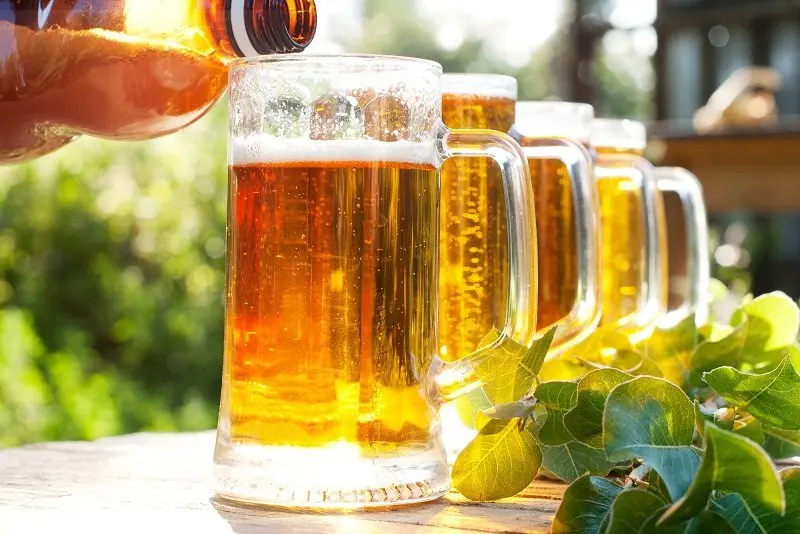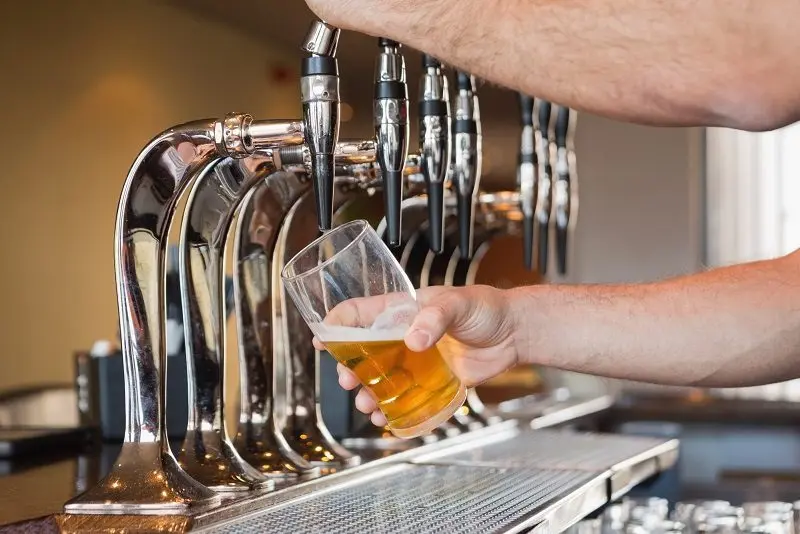There is no single right way to pour beer. Each country has its own requirements for this process, formed under the influence of local culture. The biggest difference is in the height of the “beer cap” – the foam on top of the glass. We will look at the parameters that allow you to control the intensity of foaming in the glass.
1. Temperature
The optimum serving temperature depends on the type of beer. General rule: the warmer the drink, the more foam it appears. In turn, too cold beer does not reveal its taste well. After a few sips of a chilling drink, the tongue becomes numb, and discomfort appears in the mouth.
Recommended beer temperature:
- Lager – + 6 ° C (the most popular variety, it accounts for up to 80% of all beer in the world);
- El – + 7-10 ° C;
- Wheat beer – + 7-12 ° C;
- Lambic – + 2-5 ° C.
Nearly every brewer lists the recommended drinking temperature for their beer on the label. I advise you to stick to these values.
In the case of draft beer, it is very important to cool not only the keg itself, but also the bottling system. Passing through the warm pipes, even a well-chilled beer turns into foam, making it impossible to quickly fill the glass.
Under any circumstances, the first 1-2 liters of the keg will foam a lot, as the beer is initially under high pressure. In order not to waste time, experienced bartenders fill a few spare glasses, allowing the beer to settle.

2. Glass preparation
The glass is thoroughly washed, but not wiped; small droplets of water should remain in it. Water covers microscopic roughness (scratches) on the glass, preventing the beer from crystallizing – the main reason for the appearance of abundant foam.
Ideally, the temperature of the glass should match the temperature of the beer, but in practice, few adhere to this rule.
3. Filling technology
Depends on how big of a beer hat you want to get. To pour beer without foam, the glass is held at an angle of 45 ° at a distance of 2-3 cm from the container (bottle or keg tap). Slowly, beer is poured along the wall in a thin stream, filling the glass with a maximum of 3/4 of the volume.
To form a thick beer cap, part of the glass is filled by holding it at an angle of 45°. Then the glass is leveled, and the rest of the beer is added strictly in the center. The more drink is poured in the center, the higher the beer cap will be.










